61 F. average high on October 9.
54 F. high on October 9, 2014.
October 10, 1977: A few locations received early snow, including Minneapolis with 2.5 inches, Gaylord with 2 inches, and Jordan with 2 inches of snow. Source: NOAA.
October 10, 1970: Early snowfall was recorded in west central Minnesota. Snow totals ranged from a trace to 4.2 inches in Benson. Other areas included Montevideo with 4 inches, Canby with 3.2 inches, Morris with 2.6 inches, Willmar with 2.5 inches. New London, New Ulm, and Buffalo all recorded 2 inches of snowfall.
October 10, 1949: Bizzare storm brings Hurricane force winds across Minnesota. This was possibly the strongest non-thunderstorm winds seen in Minnesota. Top winds were clocked at 100 mph at Rochester, with a gust of 89 mph at the Twin Cities International Airport. 4 deaths and 81 injuries were reported. Numerous store windows were broken, and large chimneys toppled. The top 10 floors of the Foshay building were evacuated with the tenants feeling seasick from the swaying building.
October 10, 1928: Record high temperatures were set across central Minnesota with high in the upper 80s to lower 90s.

Big Swings
From 80s to a Frost in One Week?
So you're telling me I can rake leaves in my shorts on Sunday? Yep. 80s while you take out the dock or drag the lawn furniture into cold storage. Sunday's record high is 84, set in 1930. We'll come close.
At a recent Edina Rotary talk someone asked if climate change might be a good thing for Minnesota.
"Longer growing season, less severe winters, what's not to like?" Good point. You may be surprised to hear me admit that a slow motion warming trend may, in fact, be a net positive for Minnesota into 2040 or 2050.
Agriculture will face pressure from big swings in rainfall - more whiplash, going from drought to flood - but most models predict ample moisture here. And we'll have something in short supply across the western USA. Water. Neighbors who fled to California or Arizona may think about moving back.
But for most of the planet more weather volatility and warming (rising) seas will be a net negative.
This weekend will feel more like late August. Soak it up, because October returns Monday. The first metro frost is possible in one week, coming 10 days later than average.
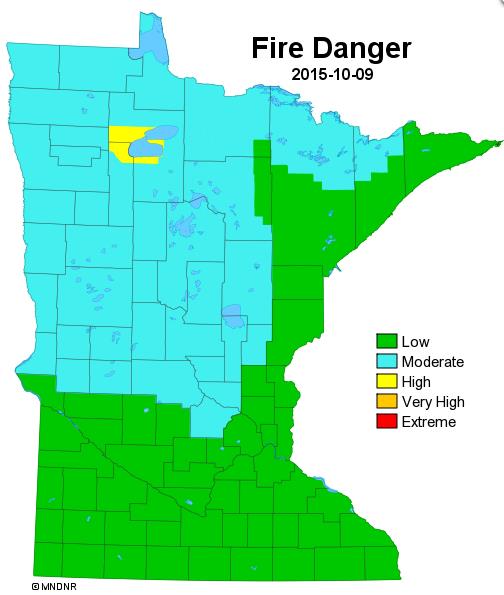
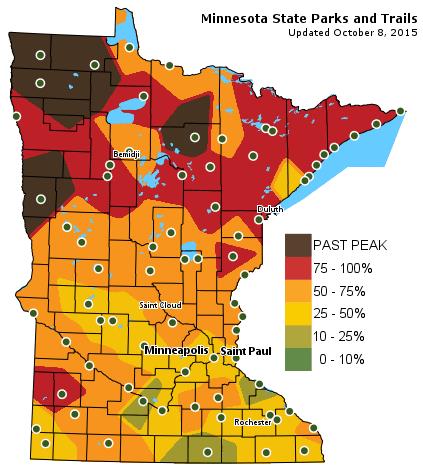


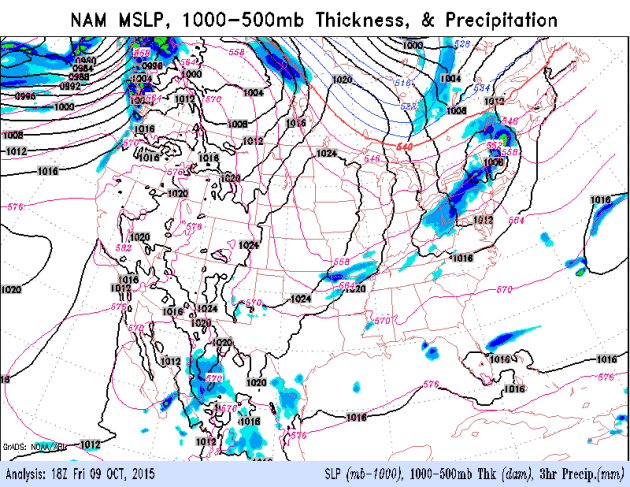

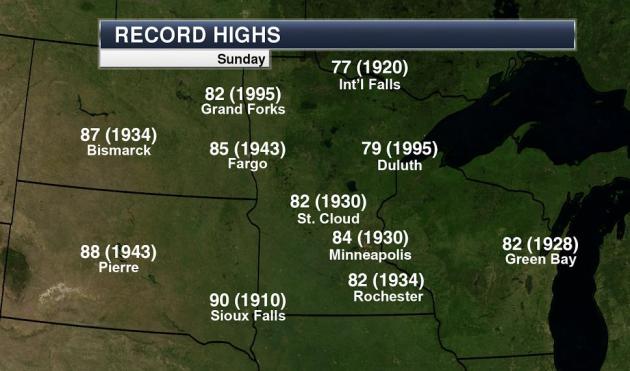
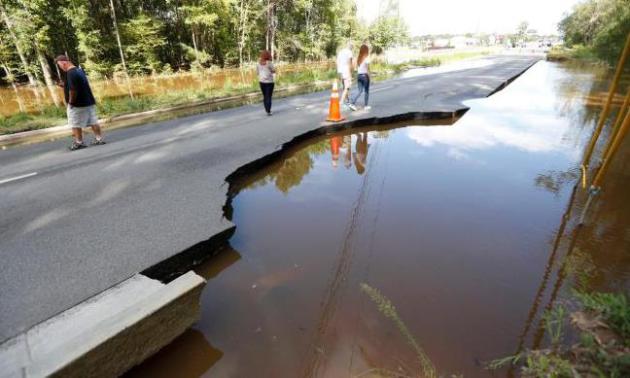
Photo credit above: "In this Tuesday, Oct. 6, 2015 file photo, pedestrians walk down Dorchester Road at Sawmill Branch Canal as it begins to wash away due to floodwaters near Summerville, S.C. Residents are concerned that the Ashley river will continue to rise as floodwaters come down from Columbia. South Carolina had problems with crumbling roads and bridges and old drinking water systems and dams long before the historic floods of the past week." (AP Photo/Mic Smith, File).
* Over $1 billion in damage from the Carolina flooding? Details via GreenvilleOnline.

South Carolina Floods a Wake-Up Call for the Future. Here's a clip from a story at NRDC, The National Resources Defense Council: "...We've heard many times this week how these floods are the result of a one thousand year storm (a storm with a 0.1% chance of occurring in any given year). But the so-called "one thousand" or "one hundred" year storm of the past is likely to happen more frequently in the future. Flooding from Superstorm Sandy was considered a 500-year flood event, but scientists think similar levels of flooding could occur every two to twenty years due to climate impacts. Climate change slowly tilts the odds in favor of these kinds of extreme events. And the last time South Carolina experienced damages on this scale was not one thousand years ago. It was 26 years ago, when Hurricane Hugo made landfall in September 1989..."
Photo credit above: "The aftermath of the flooding in North Charleston, South Carolina caused by over 15 inches of rainfall resulting from Hurricane Joaquin." Photo by Ryan Johnson and used under Creative Commons license. http://bit.ly/1N1rAES
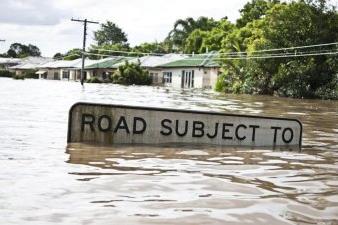
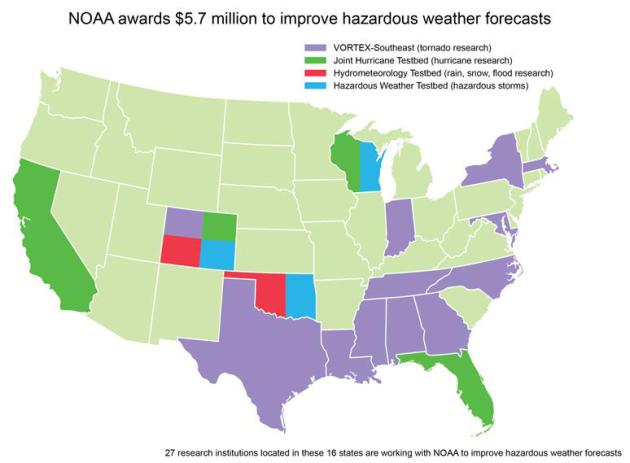
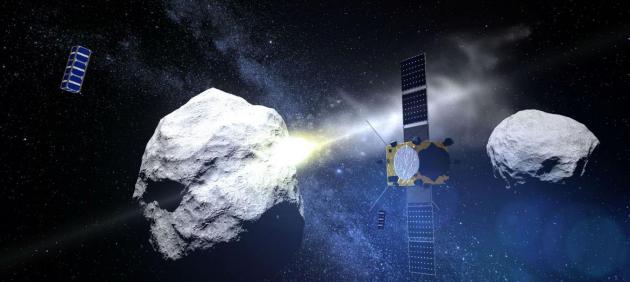
NASA and ESA Are Forming a Super Space Team to Prevent Armageddon. Quartz has another interesting story - here's a snippet: "The American and European space agencies are teaming up to save the world, and they’re doing it all without cheesy Aerosmith songs (video) or bad Ben Affleck haircuts. Back in 2012, NASA and the European Space Agency (ESA) announced that they were joining forces to study potentially hazardous near-Earth asteroids, and how best to deflect them. The project, called Asteroid Impact & Deflection Assessment
(AIDA), kicked into high gear earlier this year, when ESA revealed the
unlucky test subject: 65803 Didymos, a binary asteroid system in which a
small asteroid orbits a larger one..."
Image credit above: "Initiate deflection sequence." (ESA/ScienceOffice.org).

Using Tweets to Detect Earthquakes? It's all about the data, preferably vetted data. Here's an excerpt from Quartz: "...It
only took one minute and 20 seconds—from just 14 tweets—to be alerted
of an earthquake aftershock in Chile. In 2014, the USGS was alerted to
the earthquake in Napa, California in 29 seconds using Twitter data, the
company said on its blog post. This data also allows the USGS to
improve their own detection system and acts as a secondary check, so if a
sensor detects an earthquake in a densely populated area but no-one is
tweeting about it, then the USGS knows it’s a false alarm..."
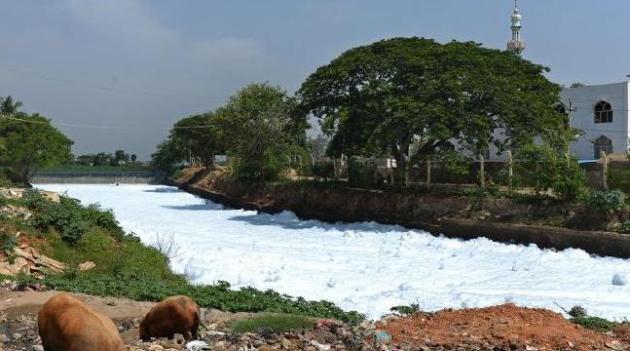
This Lake in India is Straight Out of a Horror Movie. This takes pollution to a whole new level; details via news.com.au: "This
is actually an incredibly rare and very unnatural phenomenon. It’s a
lake in India that’s so toxic that it froths over and even bursts into
flames. It’s a scene straight out of a horror movie. Located in the
bustling hi-tech hub of Bangalore, the 36 kilometre Bellandur Lake is
the largest — and most polluted — one in the city. The foam is a result
of the toxic water which contains a high content of ammonia and
phosphate and very low dissolved oxygen..."
Image credit: "A canal which once carried water from Bellandur Lake to Varthur Lake."

"Steve Jobs" Doesn't Understand Steve Jobs. Slate takes a look at the movie, what they got right, and what they may have gotten wrong; here's an excerpt: "...The
Big Brother of Jobs’ “1984” commercial was IBM, the big blue machine
that built big black boxes that powered big bad bureaucracies. His
dead-eyed drones stared dully at a single, monolithic video screen that
enforced their uniformity. Jobs thought he was fighting that machine by
putting the same power into friendlier, smaller, brightly colored boxes
that would fit on our desks and ultimately in our pockets and on our
wrists. And, in some ways, he was right. Personal computing transformed
society, ushered in the information age, and democratized the tools of
mass communication. Jobs’ vision, combined with his extraordinary design
sense and marketing acumen, helped to make all of that happen...."

When Amazon Dies.
Hopefully no time soon, mind you. But what happens to all your digital
content (movies, books, music) if and when the big tech giants get
disrupted? Here's an excerpt of an interesting story at The Atlantic: "...In
order to keep a film in your collection watchable, there’s a
constellation of pieces that must be in place: The software that streams
the video has to work, the devices you want to use to run that software
have to remain compatible with it, and the film itself has to be
accessible on that software. None of these things is guaranteed. The
films you buy could already, at any time, automatically disappear from
your Instant collection. (Again, that's right there in the Amazon
service terms.) All this signals a larger cultural shift in the way
people think about ownership of media in the 21st century, or how they
ought to be thinking of it..."
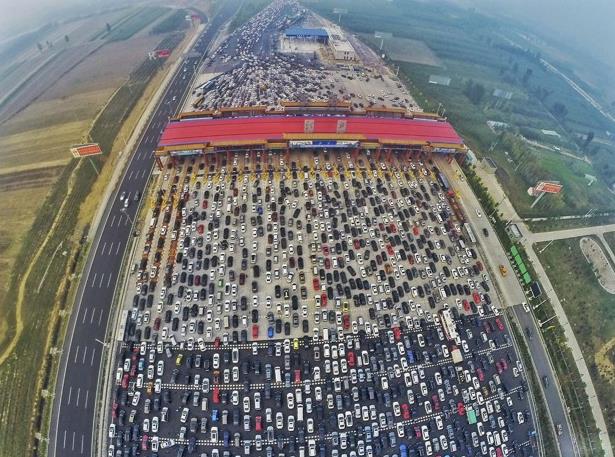
"Carmageddon". And you thought your commute was bad, how 'bout 50 lanes of gridlock? CityLab has the gruesome details; here's a clip: "Traffic
after the holidays tend to be pretty awful. But China may have just
turned every driver’s worst nightmare into reality as hundreds of
millions of people headed home at the end of a Golden Week, a week-long
national holiday. Thousands of motorists found themselves stranded on
Tuesday in what looks from above like a 50-lane parking lot on the G4
Beijing-Hong Kong-Macau Expressway, one of the country’s busiest roads..." (Photo: Reuters/China Daily).

Meet The Guy Who Bought the google.com Domain for $12. I know - amazing. So is the man who found the bug and donated a reward (from Google) to charity. Yahoo Finance has the story - here's a clip: "...In a stroke of luck, Ved had been searching Google Domains,
Google's website-buying service, when he noticed that Google.com was
available for purchase on September 29. Ved bought the domain for $12
and, he says, momentarily gained access to its webmaster tools before
Google canceled the sale. An ex-Googler himself (Ved loves Google so
much that he has set it as his Facebook profile photo), Ved said it was
never about the money. Google does routinely reward people who discover hiccups in Google's system as part of it security-vulnerabilities program..."

TODAY: Sunny, gusty winds. Winds: SW 15-30+ High: 75
SATURDAY NIGHT: Clear and mild. Low: 57
SUNDAY: Sunny. Near-record warmth. Winds: S 10-15. High: 83
MONDAY: Mostly cloudy, windy and cooler. Winds: NW 15-30. Wake-up: 59. High: 65
TUESDAY: Partly sunny, less wind. Wake-up: 43. High: 62
WEDNESDAY: Lot's of sun, breezy. Wake-up: 50. High: 64
THURSDAY: Showers, turning sharply colder. Wake-up: 41. High: 57 (falling)
FRIDAY: Some sun, frost at night? Wake-up: 41. High: near 50
SUNDAY: Sunny. Near-record warmth. Winds: S 10-15. High: 83
MONDAY: Mostly cloudy, windy and cooler. Winds: NW 15-30. Wake-up: 59. High: 65
TUESDAY: Partly sunny, less wind. Wake-up: 43. High: 62
WEDNESDAY: Lot's of sun, breezy. Wake-up: 50. High: 64
THURSDAY: Showers, turning sharply colder. Wake-up: 41. High: 57 (falling)
FRIDAY: Some sun, frost at night? Wake-up: 41. High: near 50
Climate Stories...
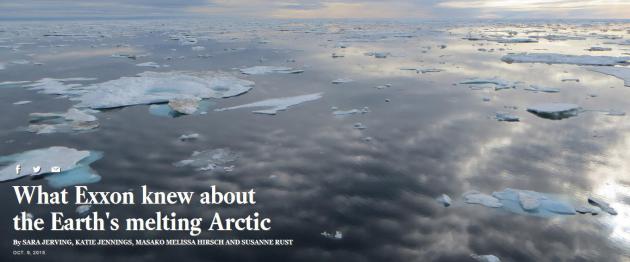

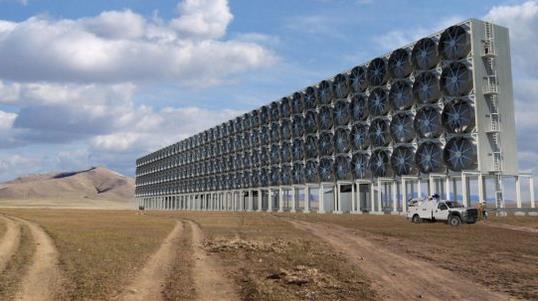
Snatching CO2 Back from the Air. Will
we see new technologies capable of removing CO2 from the air? Count on
it - the question is how quickly these new technologies can scale, and
how quickly prices can drop to the point where they can be deployed
(everywhere). Here's an excerpt of a promising example from The Toronto Star: "Residents
of Squamish, B.C., will witness history this week when a small company
from Alberta flicks the switch on an industrial facility that chemically
grabs carbon dioxide out of thin air. The facility, designed and built
with support from billionaires Bill Gates and oilsands financier Murray
Edwards, isn’t just a first for Canada. It may be the largest
demonstration of its kind in the world, and takes us closer to a day
when humans can suck more CO2 from the atmosphere than they dump in..."
Image credit above: Carbon Engineering. "A
rendering of a commercial-scale CO2 air capture system being designed
by Calgary-based Carbon Engineering. The company hopes to one day make
it economical to pull CO2 from the air."
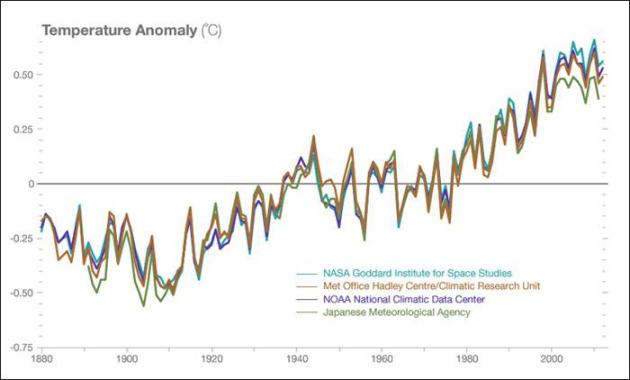
Climate Change: Facts vs. Opinions.
No, the science is never settled (it never is), and climate models have
conflicting predictions for the future. But some things are now beyond
dispute. Here's an excerpt from a Scientific American blog post that provides a much-needed reality check:
FACT: Increased human fossil-fuel consumption over the past two centuries has increased levels of carbon dioxide in the atmosphere. Atmospheric CO2 recently surpassed 400 parts per million, the highest level in more than 800,000 years.
FACT: As a result of increases in atmospheric carbon dioxide, global surface temperatures have increased by about one degree centigrade since 1880. The 10 warmest years ever recorded—with the exception of 1998—have occurred since 2000. 2014 was the warmest year ever recorded.
Image credit above: "It is a fact, not an opinion, that human consumption of fossil fuels has boosted global temperatures over the last century." Source: NASA, http://climate.nasa.gov/scientific-consensus/
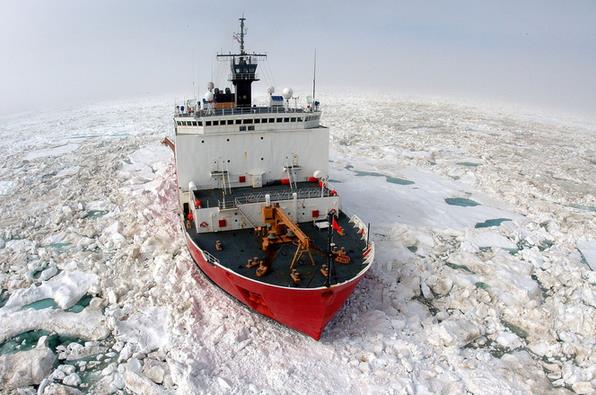
Photo credit above: "Obama called for spending money on icebreakers to take advantage of opening shipping lanes as the Arctic region melts." US Coast Guard, CC BY

Pumpkin Lovers Face Slim Pickings, Thanks to Climate Change. No, not the pumpkins? As if coffee and chocolate wasn't bad enough, Scientific American warns that prime pumpkin-growing locations are seeing the impact of climate change and greater weather volatility: "...Weather data appear to support Bakus. Over the past century, Illinois has seen a 10 percent increase in precipitation, along with increases in heavier rain events. Within the past decade, from 2005 to 2012, the state has experienced either very wet conditions or drought, according to Jim Angel, a state climatologist for the Illinois State Water Survey, part of the Prairie Research Institute at the University of Illinois, Urbana-Champaign. “We’re fairly certain that’s tied to climate change. The hard part is figuring out the impact of these weather events..."
File photo: FANCY (MARS).
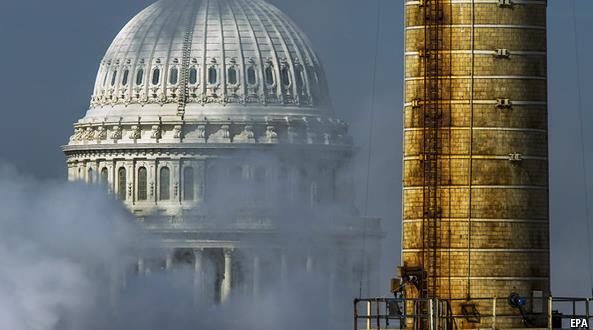
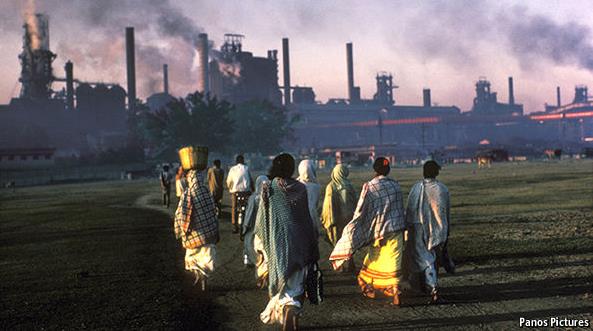
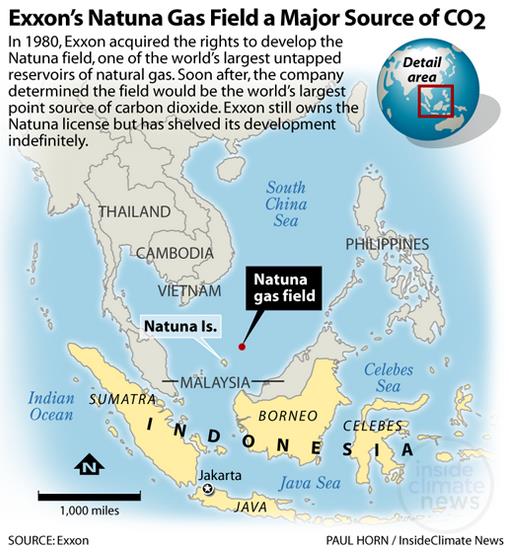
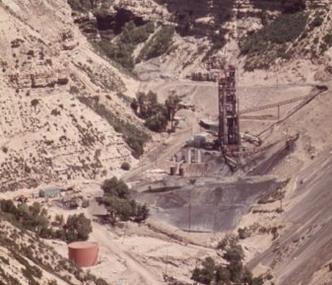
Image credit above: "In 1980, Exxon acquired the Colony Shale Oil Project in Colorado to support the production of synfuels. Two years later, Exxon announced the termination of the project, in part due to low oil prices." (Credit: U.S. National Archives via Wikimedia Commons).
No comments:
Post a Comment